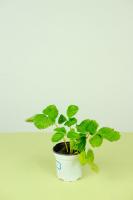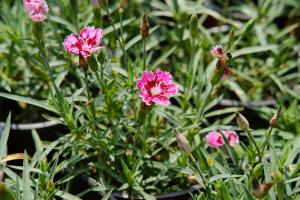How to Diagnose Plant Problems
Plants can suffer from a wide range of problems, including pests, diseases, nutrient deficiencies, and environmental stress. Identifying the problem is the first step towards finding a solution. Here are some strategies for diagnosing plant problems.
Observation
One of the most important steps in diagnosing plant problems is to observe the plant carefully. Look for signs of damage, such as yellowing leaves, holes in the leaves, or wilting. Also, pay attention to the location of the plant, the amount of sunlight and water it receives, and the temperature and humidity of its environment. Keep notes of your observations, and take pictures if possible.
Research
Once you have observed the plant and identified the symptoms, it is time to do some research. Use books, websites, and other resources to learn more about the plant and its common problems. Look for pictures and descriptions of similar symptoms to help you identify the problem. Additionally, find out if there are any conditions, such as soil pH or nutrient levels, that might be contributing to the problem.
Testing
Sometimes, it is necessary to test the soil, water, or plant tissue to identify the cause of the problem. Soil tests can determine pH levels and nutrient deficiencies, while water tests can reveal the presence of toxins and pathogens. Plant tissue tests can diagnose nutrient deficiencies or excesses. Testing can be done by a professional or with at-home kits.
Consult with Experts
If you are still not sure what is causing the problem, seek advice from experts such as gardeners, horticulturists, or extension agents. They may have experience with similar problems and can offer suggestions for treatments or preventative measures. Online forums and social media can also be a helpful resource for connecting with other gardeners and plant enthusiasts.
Treatment
Once you have identified the problem, it is time to take action. Treatment options will vary depending on the cause of the problem. For pests, such as aphids or caterpillars, chemical or organic treatments may be necessary. For diseases, removing infected plant material and applying fungicides may be warranted. Nutrient deficiencies can be corrected with fertilizers or amendments. Environmental stress can be reduced by watering and fertilizing appropriately and providing shade or shelter if needed.
Prevention
Preventing plant problems is always preferable to treating them. Regular maintenance, such as watering, fertilizing, pruning, and cleaning up debris, can help keep plants healthy. Choosing disease-resistant or pest-resistant varieties can also be helpful. Additionally, paying attention to environmental factors, such as sunlight and temperature, can reduce stress on plants.
In conclusion, diagnosing plant problems can be challenging but rewarding. By carefully observing plants, doing research, testing, and consulting with experts, gardeners can identify the cause of a problem and take appropriate action to restore plant health. Preventing problems through regular maintenance and thoughtful plant selection can also help keep plants healthy and happy.

 how many times do yo...
how many times do yo... how many planted tre...
how many planted tre... how many pine trees ...
how many pine trees ... how many pecan trees...
how many pecan trees... how many plants comp...
how many plants comp... how many plants can ...
how many plants can ... how many plants and ...
how many plants and ... how many pepper plan...
how many pepper plan...






























